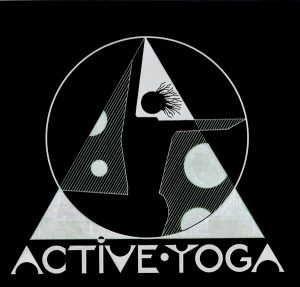Inquiry and Experience #6 and #7
There’s a surge of disclosure on yoga injuries due to the quickly growing number of students and their use of social media. Don’t panic. Although you will likely be injured at one time or another doing yoga (including muscle strain as injury), it’s unlikely to have a lasting effect for the majority of you.
On the other hand you might get yourself in trouble if you have a condition that will be ill served by the yoga practice you’ve engaged in. Not every body should do every thing. You may have a health or skeletal, soft tissue or muscular issue that warrants caution. Even those of sound body can be at risk engaging in the wrong practice or becoming overzealous. Innocent people have suffered at the hands of unskilled or thoughtless teachers as well.
Here’s my sincere advice for new and old students:
Stay in Your Own Lane ~ move at your own pace and do the best you can without overreaching. You might research range of motion often referred to as R.O.M. Everyone’s is different but there are normal ranges. Are you practicing for a circus career? Can you be content not putting your foot behind your head like the guy next to you? Take a good look. Do you really want to look like that? No. It’s damn unattractive and you don’t.
Pay Attention ~ this is the fruit of staying interested and the two are co-dependent. Don’t space out or move by rote. Notice everything about sensation. Take your time. Notice everything about your teacher. If the instruction isn’t sufficient or her/his manner is questionable to you, tread lightly. This comes under trust yourself but I can’t advise you on how to do that here. That would be flippant.
Stay Interested ~ this one benefits from a skilled teacher’s navigation. If you don’t find the process of movement fascinating enough to capture your imagination you’ll likely miss a lot.
Change it Up ~ variety being the spice of life applies to food and yoga poses, not just sexual partners. It’s a recipe for good health. Like love that begins as lust, the early yoga rush wears off and will never be the same. Don’t look for more of the same but do the work of finding different ways to move within poses that are familiar.
Don’t beat postures to death. Rework them. Be creative and curious.
Use Your Imagination ~ notice that the movement happens in the imagination and can be fostered by that as you choose your imaginings. I know this is a bit esoteric. It’s the best I can do on short notice. Good teaching fosters that imagination. Let me teach you this; in your flow classes the pose should grow from the seed of the one before.
Inquiry and Experience #6
Step forward to a low lunge from down dog. Before you rise into a high lunge imagine it. Where do you feel that? What took the heat? Without thought it might be your lower back or hip flexors. Pause to firm the outer hips and glutes. Without changing the bend in the front knee raise the hips as high as you can. You’ve decompressed the joints. Now rise up using the glutes to take the trunk from parallel to perpendicular.
Get Sensitive to Reactivity ~ Newton made a perfect case for hatha yoga with his analysis of motion. Every action has an opposite reaction. An object at rest will stay at rest until an external force acts upon it. Then it reacts. Don’t shy away from the sensation of reaction but tune in to it. Work with it. Here’s an easy exercise for you to do working with unconscious reaction.
Inquiry and Experience #7
How does the sensation of movement caused by respiration instigate the movement of muscles that yoga teachers refer to as “breathe into the _________ that gets you to move internally in a specific way?
Take a deep inhalation and notice where the sensation of breath hits the wall so to speak. Where in the upper trunk and head does this happen? What do you do in your musculature to make room for a bigger breath? If you imagine directing the breath into the side ribs can you feel how the side ribs move in response to the sensation of tightness that is in a sense the sensation of breath hitting the rib wall? Now take a few normal breath cycles. Does it feel like you made your thorax more spacious by moving the breath?
You are breathing into your lungs which are not nearly the size of your ribs. You are not breathing into your ribs. What you are doing in reactivity is moving the respiratory and secondary muscles in specific ways to stretch and so move bones. You did this because it was a directive and you have an imagination.
I’ve not done a list of things to do or not do before. I resent the over simplified pabulum of that model so forgive the reduction but I weigh in on all things modern yoga and this is what came up for now.
On another personal note: My yoga injuries have come from not knowing my limits, not trusting myself to ignore a questionable instruction, and the love of movement to music that knew no bounds. This happened at an earlier time in yoga’s modernity when no one spoke of injuries. In full disclosure, I don’t know if I would have listened anyway.
